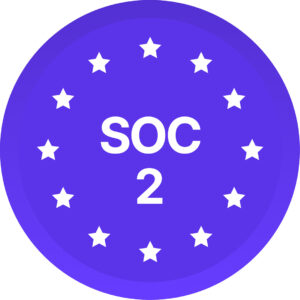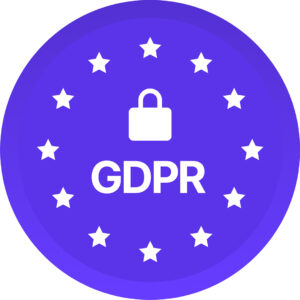When teams include different backgrounds, identities, and working styles, conflict becomes inevitable. Effective workplace culture doesn’t avoid conflict, it manages it intentionally, in ways that drive learning, trust, and better results.
Why avoiding workplace conflict undermines culture & performance
Research by CPP Inc. found that U.S. employees spend 2.8 hours weekly dealing with workplace conflict, costing approximately $359 billion annually in lost productivity. When organizations prioritize harmony over healthy disagreement or dialogue, several negative outcomes emerge:
- Passive disengagement: Employees stop raising concerns or sharing ideas
- Communication silos: Teams become isolated and collaboration decreases
- Reduced psychological safety: Trust erodes as tensions remain unaddressed
- Lost innovation opportunities: Diverse perspectives fail to surface and challenge existing thinking
The result is a workplace where silence breeds stagnation, and avoiding difficult conversations ultimately costs more than addressing them directly.
Why diverse teams make conflict necessary
In the UK, the Enterprise Research Centre (ERC) report reveals that firms with diverse workforces are 22% more likely to introduce new products or processes. However, this advantage only materializes when organizations develop intentional approaches to managing the natural friction that comes with diverse perspectives.
When combined with high-performance work practices such as flexible job roles and open communication, innovation output increases by as much as 25%.
Real-world case study: Global team transformation
Take this example from a Canadian tech startup based in Toronto, which expanded teams to India and Germany. Initial cultural differences in communication styles created frequent misunderstandings, delayed project timelines, and decreased team morale.
The company invested in cultural agility coaching to address these challenges:
- Established shared norms for feedback, decision-making, and meetings
- Implemented bi-weekly cross-office syncs respecting different time zones
- Created structured processes for addressing cultural misunderstandings
Results: Project delivery improved by 22%, team satisfaction rose, and collaboration across offices strengthened noticeably.
For more examples: https://globalmindfulsolutions.com/case-studies-of-multicultural-team-success/
Understanding cultural differences in conflict resolution
Different cultural backgrounds significantly influence how people approach workplace disagreements. Recognizing these patterns prevents misinterpretation and enables more effective resolution.
Direct vs. Indirect communication styles
Direct communication cultures (common in US/UK workplaces):
- Favor open debate and frank discussion
- Address conflicts head-on through candid conversation
- Value transparency and immediate issue resolution
Indirect communication cultures (common in many immigrant communities):
- Prioritize maintaining group harmony
- Handle conflict through subtle approaches or temporary withdrawal
- Preserve relationships while addressing underlying issues
Research shows Irish-American teams typically prefer confrontational approaches, while teams with Asian or Latin American backgrounds often use more diplomatic conflict resolution methods.
Without awareness of these differences, direct feedback may be perceived as aggressive, while indirect communication might be misread as disengagement.
Three evidence-based practices for inclusive conflict management
Conflict is inevitable in diverse teams, but how leaders manage it makes all the difference. Inclusive conflict management requires intention and skill. Here are three practical approaches to help you navigate conflict with empathy and effectiveness:
1. Address communication differences directly
Cultural backgrounds heavily shape how people give and receive feedback.
Tip: Before reacting to the delivery, pause and ask yourself:
- “What is the core message here?”
- “What cultural or personal expectations might be influencing this communication style?”
- “What assumptions am I making based on delivery style?”
2. Use structured feedback frameworks
The Situation-Behavior-Impact (SBI) model keeps conversations clear while maintaining dignity:
Tip: Use private, structured feedback frameworks like Situation-Behavior-Impact (SBI) to keep conversations clear and constructive. After sharing your perspective, invite the other person to share theirs to foster mutual understanding and co-creation of solutions.
Example: “In yesterday’s meeting (Situation), when the report wasn’t submitted on time (Behavior), it delayed our next steps (Impact). Can you help me understand what happened from your perspective?”
This approach focuses on specific behaviors rather than personal characteristics, invites dialogue, and maintains psychological safety during difficult conversations.
3. Repair trust when tension runs deep
Repairing trust requires intentional conversations that acknowledge feelings and invite collaboration on solutions.
Tip: When you sense tension after a disagreement, try:
- “Can we pause and talk about what just happened? I want to understand how we got here and how we can move forward.”
This approach signals accountability while creating space for mutual problem-solving.
How to weave inclusive conflict resolution culture
Moving beyond individual skills, organizations need systematic approaches:
- Train managers on conflict navigation skills and cultural communication differences. Practical role-plays and scenario discussions build confidence.
- Launch safe practice spaces where teams can experiment with difficult conversations without fear of judgment. This normalizes conflict as a growth opportunity.
- Debrief key decisions and meetings, especially after moments of tension. Reflection helps teams learn what worked, what didn’t, and how to improve future interactions.
- Set clear norms around feedback styles, conflict expectations, and respectful communication. Documenting these norms creates a shared language and standards.
- Use surveys and pulse checks to measure team climate regularly tracking psychological safety, feedback frequency, and conflict resolution experiences. Data guides where to focus efforts.
- Lead with humility. Own your mistakes and invite feedback from your team about how you handle conflict. Modeling vulnerability encourages others to do the same.
To put these strategies into practice, see how our inclusive communication workshop helps teams create safer, more collaborative environments.
Measuring the business impact
Organizations implementing these structured approaches report significant improvements:
- 30% reduction in staff turnover (Canadian government team study)
- 18% increase in engagement scores
- 25% boost in innovation output when combined with inclusive practices
- 19% improvement in innovation through enhanced psychological safety
The ADR Institute of Canada emphasizes that surface-level DEI training alone proves insufficient. Effective inclusive workplaces require conflict mediation skills and intercultural awareness training.
Reframing conflict as a catalyst
Inclusive conflict management transforms workplace disagreements into sources of clarity, creativity, and connection. Rather than smoothing over discomfort, successful organizations equip teams with tools and shared language to engage across differences and grow stronger through thoughtful dialogue.
Ready to transform your workplace culture? Learn how Diversio’s inclusion surveys and AI-powered diagnostics can help you measure and improve conflict management across your organization.

